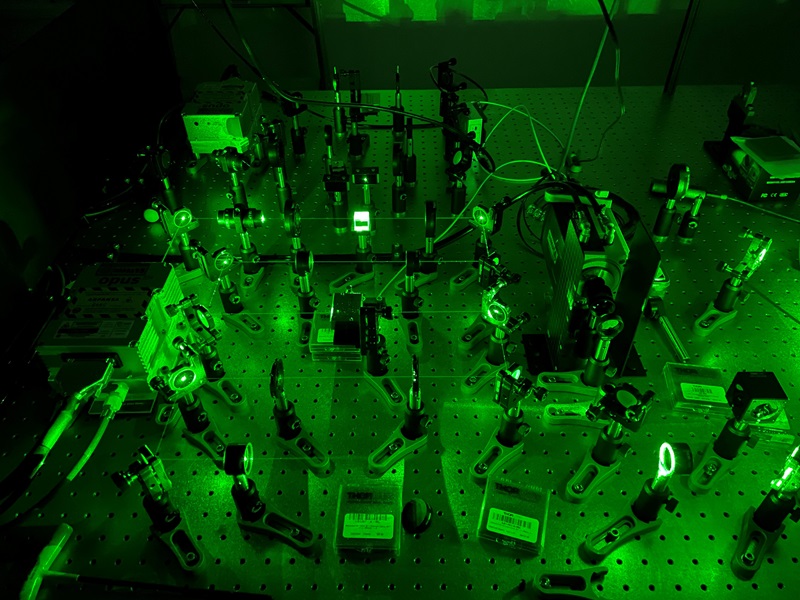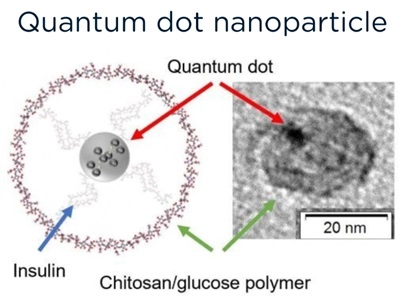Key points
- Quantum science is helping develop new technologies that have the potential to solve some of the world's greatest challenges.
- Some quantum technologies are a reality right now, but others are still just at the early research stage.
- CSIRO's quantum research focuses on sensors, computing and communications.
You've probably heard the term 'quantum leap', meaning a 'sudden, significant, or very evident (usually large) increase or advance' .
But quantum leap isn't a science term. Nor is 'quantum' about anything large at all. In fact, quantum explains the behaviour of the world at the smallest scale.
By harnessing how things work at this quantum level, science is developing new technologies that have the potential to change how we do medicine and healthcare, energy, computing, mineral exploration, finance, communications and more in the future.
Some quantum technologies are a reality right now, for example MRI machines are based on quantum phenomena. Quantum computers, which promise to solve problems we can't solve now, exist but are at the early stages of development. Quantum batteries, for example, which have the potential to revolutionise energy storage, are still at the very early stages of moving from theory to experimentation.
In this International Year of Quantum Science and Technology , find out about some of the breakthroughs CSIRO and partners are working on to help quantum technologies leap into reality.
Detecting iron in blood

Iron is vital to all living organisms. It's responsible for a variety of biological functions in our bodies such as making energy, transporting oxygen and growing cells.
However, the lack of iron is the world's major micronutrient deficiency. It affects more than two billion people , according to The Food and Agriculture Organization of the United Nations.
Diagnosing iron deficiency can be slow and complex, and treatment is inadequate worldwide, especially for women and children.
Enter the world of quantum!
CSIRO is working with the University of Melbourne, the Florey Institute of Neuroscience and Mental Health, and other partners on using a patented quantum sensor technology to detect ferritin in blood serum. Ferritin is one of the key blood tests for iron deficiency. It's a protein that is used as a proxy for the amount of iron stored in the body. In contrast, the quantum sensors measure the actual iron bound to the ferritin.
This technology has the potential to be a faster and more accurate way to diagnose iron deficiency and could have huge impact worldwide.
The Quantum 2032 Challenge
The Olympics is not just a platform for Australian sport, it's a chance to showcase Australian science and technology. As Brisbane prepares to host the 2032 Olympic and Paralympic Games, CSIRO and Griffith University researchers are using quantum computing to make the Games experience safer and more accessible.
The team is developing advanced algorithms to predict and prevent dangerous pedestrian congestion in high-traffic areas such as Southbank and the central business district. They're also working to improve scheduling for more than 1,000 wheelchair users each day, helping planners make the most of limited maxi-taxi and community vehicle fleets.
These sorts of problems are too complex or unpredictable for traditional modelling to tackle. That's where quantum computing can come in.
The team is testing solutions on cloud-based quantum processors and emulators, laying the foundation for scalable, real-time tools that will help planners manage dynamic conditions across the city.
If quantum can help deliver a safer, more inclusive Games, we'll consider that a gold-medal result.
Cryogenic cooling system in your pocket, anyone?

Imagine a future where quantum computing is as accessible as the smartphone in our pockets. Or where a quantum chip is embedded in our home laptop, supercharging the things it can do for us.
One obstacle in this vision is that most quantum computers currently need very low temperatures to work. Low temperatures mean low atomic vibrations, which maintain quantum states and calculation accuracy. As a result, quantum computing installations are typically restricted by accompanying bulky, energy-intensive cryogenic systems.
Enter CSIRO's joint venture partner, the Pawsey Supercomputing Research Centre , and tech company Quantum Brilliance.
Their approach has been to integrate quantum hardware with classical high-performance computing. As a result, they've installed the world's first room-temperature diamond-based quantum computer located on-site in a supercomputing facility, at the Pawsey Centre in Perth.
While this represents an early-stage prototype to help make quantum computing more readily accessible, demonstrating the integration room-temperature quantum technology is an exciting first step.
Not just fast but big, too
In January 2025, CSIRO showed that quantum computing could significantly improve how we solve complex problems involving huge amounts of data.
CSIRO integrated quantum computing with artificial intelligence to create novel quantum machine learning models. By using the unique properties of quantum computing including superposition and entanglement, researchers compressed and analysed a large dataset with speed, accuracy and efficiency that traditional computers today just couldn't do.
It shows how quantum could help in areas where there is a lot of complex data. Areas such as real-time traffic management, agricultural monitoring, healthcare and energy optimisation.
Unlike regular binary computer bits that are either 'on' or 'off', quantum bits (qubits) can exist in multiple states at once, meaning quantum computers can process many possibilities in the form of superpositions at the same time.
With the global volume of data doubling every few years, quantum computing's ability to handle this complexity will become increasingly valuable.
Needles out, dots in

CSIRO's biomedical researchers worked with Endo Axiom , a spinout from the University of Sydney, who have developed an oral insulin delivery method to replace painful daily injections. It will make life easier for children with Type 1 Diabetes, reducing the risk of hypoglycaemic episodes.
This new process for delivering insulin uses quantum dot nanoparticles – microscopic semiconductor particles just a few nanometres wide. That's one-millionth of a millimetre! Due to quantum mechanics, these tiny particles have unique optical and electronic properties.
CSIRO has helped by developing insulin-coated nanoparticles encased in a polymer layer that can be swallowed . The medicine, called a bioconjugate, can withstand the gut's highly acidic environment. When it reaches the intestine, enzymes trigger release of the insulin. From there it's absorbed into the bloodstream and further processed in the liver. The insulin is completely released, without the need for injections.
With support from scientists at CSIRO's Biomedical Materials Translation Facility , Endo Axiom is now closer to creating a clinically viable insulin delivery solution.
Upping hands-on access
What's one of the biggest barriers for companies and researchers in the quantum ecosystem? Hands-on access to hardware and software.
To help overcome this, CSIRO is partnering with The University of Queensland to build Australia's first open-access quantum computing testbed .
Backed by $6M through the Queensland Quantum and Advanced Technologies Strategy, the National Quantum Computing Testbed Facility (NQCT) will create new opportunities for quantum innovation, local capability and industry growth.
QuantWare, Rohde & Schwarz, and Zurich Instruments are contributing the core hardware powering the facility. CSIRO is also developing a versatile quantum software stack to support the testbed.
An Alliance for the planet
The Queensland Quantum Decarbonisation Alliance brings together quantum experts from academia and industry to tackle some of the biggest climate science and carbon emission challenges. CSIRO is a core partner in the alliance along with the University of Queensland, Griffith University and PsiQuantum.
Supported by a $10 Million investment from the Queensland Government, the Alliance aims to develop novel applications of quantum technologies. They include computing for material design, energy solutions, chemistry and modelling of transport datasets.
This unique alliance will be a first of its kind in the world and will affirm Australia's world-leading position in developing real-world applications of quantum technologies.
CSIRO's quantum research focuses on sensors, computing and communications and their aim is to help accelerate the quantum industry in Australia by boosting capability and networks in the sector.
It is estimated that quantum technologies will represent a $2.2 billion opportunity for Australia by 2030 , providing nearly 9000 jobs. Australia is already leaping its way towards this milestone.






